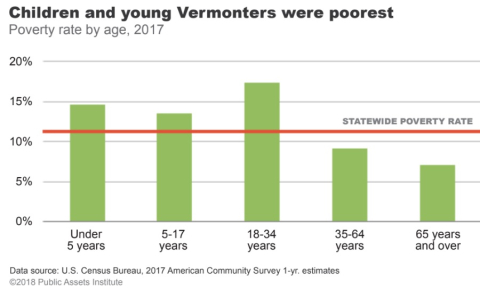Vermont’s economy is growing but not in every county, and its gains have disproportionately benefited higher income Vermonters, according to the 2018 update of “State of Working Vermont” from Public Assets Institute. Poverty is distinctly more prevalent among younger Vermonters and Vermonters of color, the report notes.

The northwestern part of the state accounted for all job growth in Vermont in the last decade, according to the Public Assets Institute report. While employment grew in Chittenden, Franklin and Washington counties, the remaining counties lost 15,000 workers.
Why are income trends so important for affordable housing programs? Housing is affordable when income and housing costs are balanced. Housing with associated costs that consume no more than 30% of a household’s income is typically considered “affordable.” It is this connection that makes understanding the income side of the scale critical to most effectively building communities where residents have affordable housing. The report finds that in 2017, nearly two-thirds of Vermont households with incomes under $50,000 were living in unaffordable housing.
